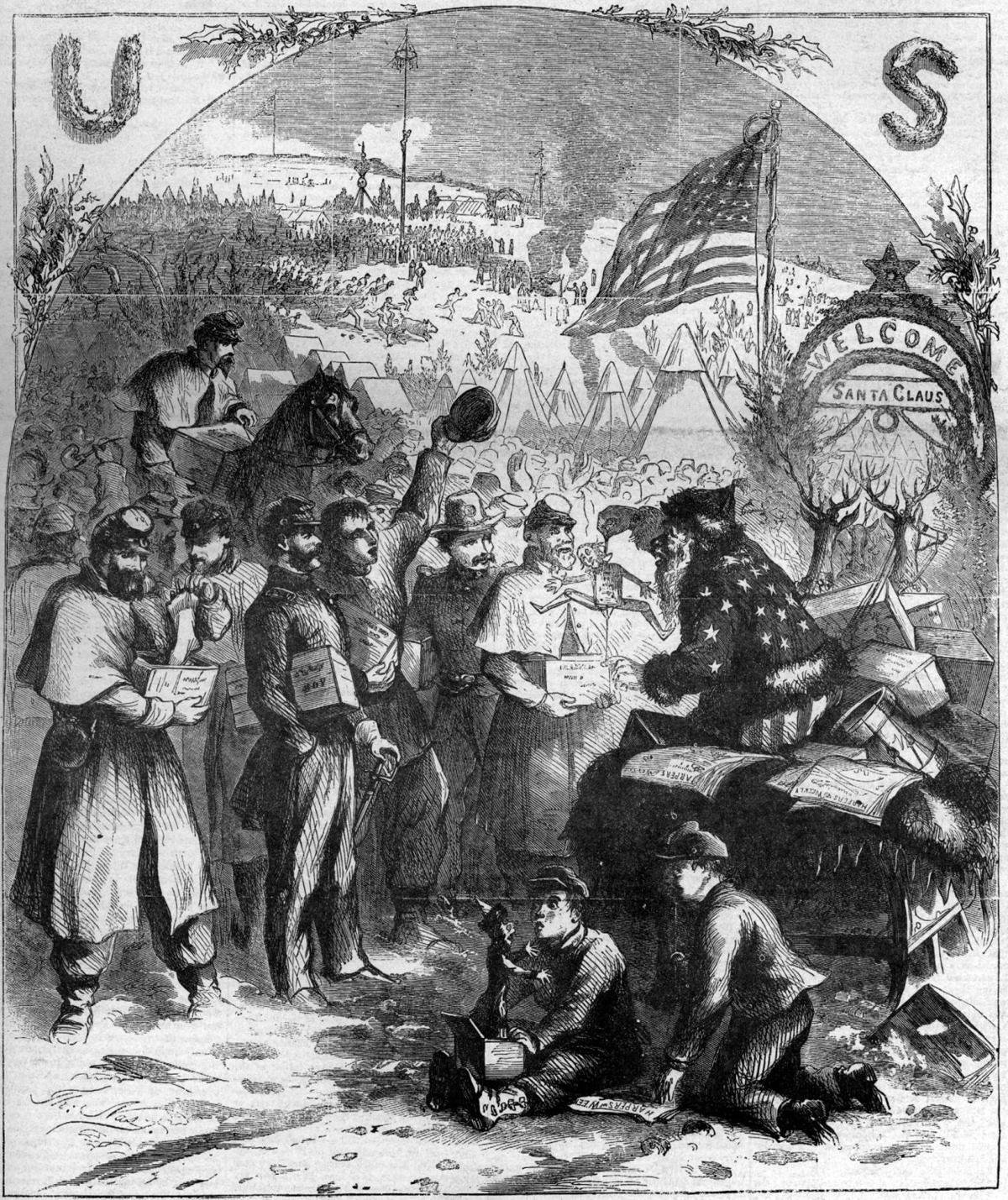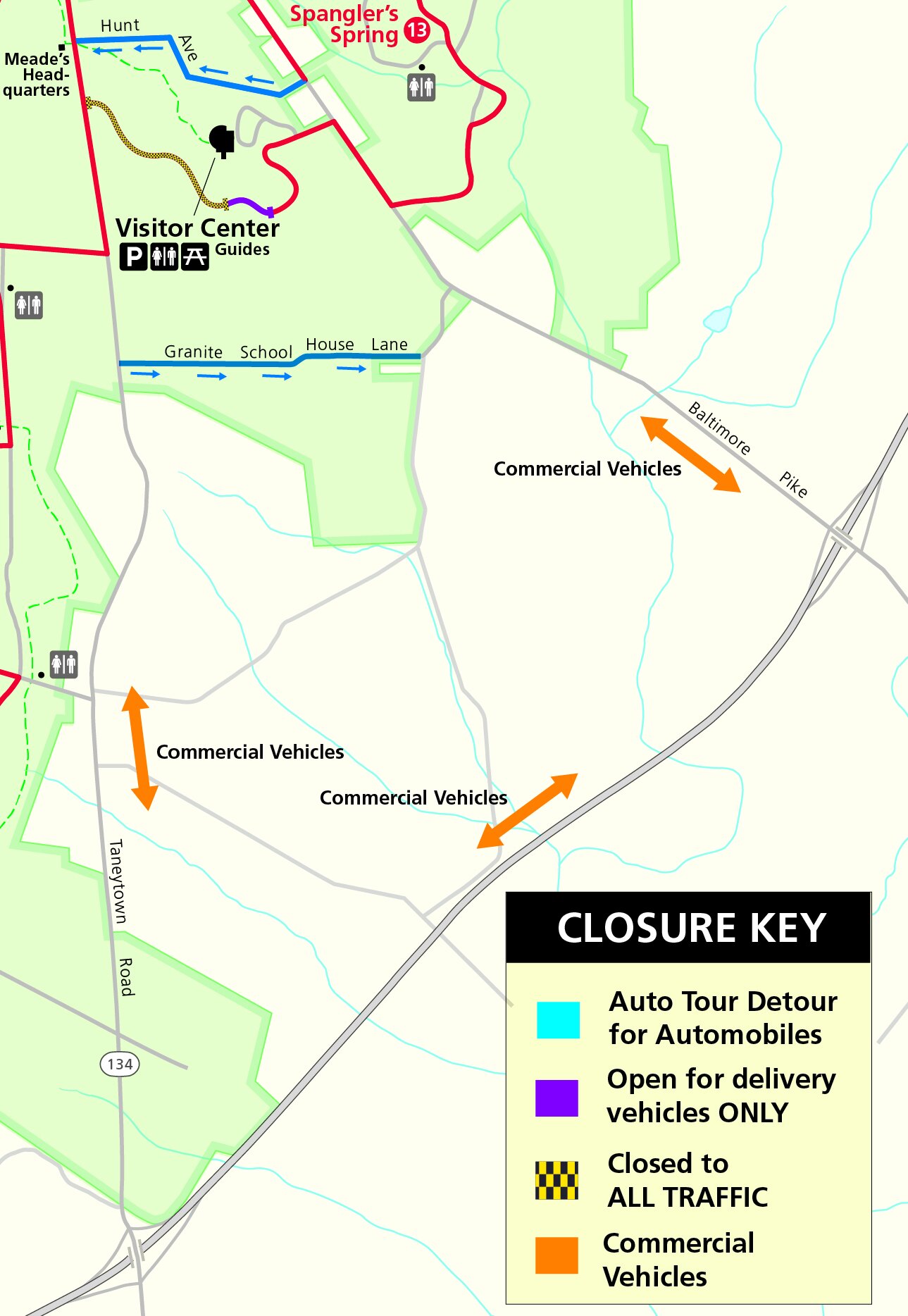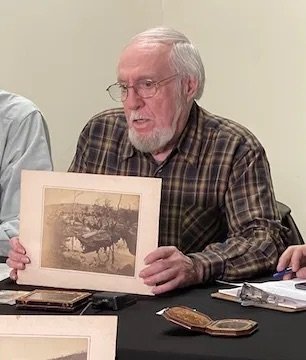Hundreds of people passing through the National Cemetery in Gettysburg at around 2:00 p.m. on Remembrance Day, 2022 (Nov.19) were curious what a small group of people were doing with a spool of red, white, and blue ribbon on both sides of the fence separating the National and Evergreen cemeteries.
As one member of the group explained to a group of curious Boy Scouts, “You are the first people since the day Mr. Lincoln gave his speech to see exactly where the president stood to deliver that speech.”
That insight is the result of a decade’s work by former Disney animator and Lincoln buff Christopher Oakley, his “New Media” students at the University of North Carolina-Asheville, advanced software that allowed a fresh look at six photographs taken the day of Lincoln’s speech, a variety of high tech tools, and the street smarts of civil war, photography, and technology experts.
Oakley had announced his findings the previous day at the Lincoln Forum conference at the Wyndham Hotel. Previous “guesses” about the location included the site of the present-day Henry Bush Brown Lincoln monument near the rostrum, the site of the present-day Soldiers’ National Monument, and various locations in Evergreen Cemetery. In recent years, a rough consensus emerged that the speaker’s platform was located somewhere in Evergreen Cemetery, probably near the present-day fence.
Finding Lincoln’s location wasn’t the original goal of Oakley’s “Digital Lincoln Project,” which he started in 2013. His first project was to create a realistic digital Lincoln “and bring him to life reading the Gettysburg Address.” The effort to find the speaker’s platform spun out of this project.
“We started with the written record and then turned our attention to the six known photos of the event,” said Oakley. “They are rich with detail and lots of information,” said Oakley.
Then the team identified the exact location from which the photos were taken, to allow triangulation. Four were taken from two locations in the cemetery, one was taken from the second floor of the Evergreen Cemetery gatehouse, and the sixth was taken from the location where the Quality Inn is now located. Oakely said the research also involved 3-D modeling and some old fashioned sleuthing.
Oakley’s team concluded that the platform was much larger than prior researchers had thought, was shaped like a trapezoid, and straddled the boundary between the cemeteries, with most of the seats in Evergreen but with the speakers standing in the National Cemetery. They also concluded that the people on the platform sat in a semicircle, not straight rows.
Saturday’s walking expedition included myself, as well as Jennifer Schuessler, a New York Times reporter who wrote a front page article about Oakley’s announcement in her publication, an archivist from the Library of Congress, several of Oakley’s photo research collaborators, and a few conference attendees who were simply interested in the project.
The group set off from the Quality Inn and stopped at each of the photo locations to view the photo(s) taken from that spot and discuss how the information helped pin down the location. They wound up at the site of the platform and used the ribbon to mark its dimensions. Along with the few curious spectators who joined them, they then took turns posing at “the spot.”
When asked if it really mattered where Lincoln stood, Oakley described the experiences of his students. “At first, almost none of them were interested in history; they joined the program for the technology. But as we got deeper into the project, they all became interested in history.”
“When we came to Gettysburg to familiarize everyone with the site and take reference photos, I noticed that as we got closer to the site, all the normal horsing around stopped. By the time we got to the site it was complete silence: the kids thought they were on hallowed ground. Knowing you are standing on the spot where Lincoln actually gave the speech ignites the imagination and transports you back.”











